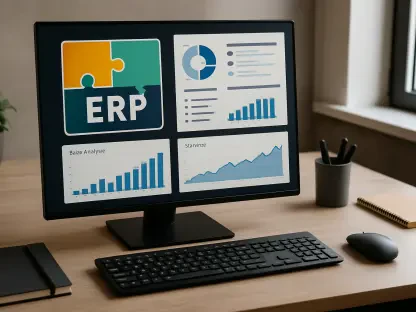Allow me to introduce Anand Naidu, our resident web application development expert, whose proficiency in both frontend and backend technologies offers a unique perspective on crafting solutions that truly address business needs. With a deep understanding of various coding languages, Anand has a knack for turning complex challenges into streamlined, scalable, and secure applications. In this engaging conversation, we dive into the essence of building web apps that deliver measurable value, exploring themes like defining success through outcomes, designing user-friendly and accessible interfaces, maintaining simplicity in architecture, optimizing performance, and embedding security from the ground up. Join us as we uncover practical insights and strategies that drive real results.
How do you define a successful web app, and what core elements do you focus on to ensure it tackles genuine business challenges?
A successful web app, in my view, is one that eliminates friction for users and delivers clear, measurable value to the business. It’s not about flashy features or the latest tech buzzwords—it’s about shortening the time to value, whether that’s through smoother operations, fewer support tickets, or customers completing tasks effortlessly. I focus on aligning the app’s purpose with specific business goals, like improving onboarding completion rates or boosting conversions. That means starting with a deep understanding of user pain points and operational bottlenecks, then designing solutions that directly address those issues while keeping performance, security, and scalability as non-negotiable foundations.
Can you share your approach to prioritizing outcomes over simply adding features when kicking off a new project?
Absolutely. I start by asking, “What are we trying to achieve?” rather than “What can we build?” It’s about defining measurable outcomes upfront—say, reducing task completion time by 20% or increasing user retention. I work closely with stakeholders to tie every piece of the project scope to a key performance indicator. This keeps the team focused on impact, not just shipping features for the sake of it. During planning, I advocate for a lean mindset: build the smallest thing that delivers value, test it, and iterate based on real feedback. This way, we’re always moving the needle on business goals rather than getting lost in a feature wishlist.
How do you approach the discovery phase to uncover where the true value lies in a web app project?
Discovery is all about getting to the heart of the problem. I treat it like detective work—digging into what the app needs to do, what frustrates users, and what policies or constraints we’re working under. I collaborate with teams to gather hard data, like heatmaps to see where users drop off, logs to spot errors, or CRM notes to understand customer pain points. I also talk to end users and stakeholders to get qualitative insights. This mix helps me map out where the app can make the biggest difference, whether it’s streamlining a workflow or fixing a broken user journey, and ensures we’re building something that’s actually needed.
What’s your strategy for keeping a web app’s architecture straightforward, especially when there’s pressure to add more features over time?
Keeping architecture simple is a discipline. I start with a clean baseline—often a structured monolith or a modular approach—because jumping to something like microservices too early can create unnecessary complexity. I resist feature creep by constantly referring back to the core outcomes we defined. If a new feature doesn’t align with those goals, it’s deferred. I also design with modularity in mind, so when growth demands more, we can add components like caching or background jobs without a complete overhaul. It’s about building a solid foundation that can evolve under pressure without turning into a tangled mess.
How do you design user interfaces that minimize frustration and make tasks intuitive for users?
I focus on removing friction at every touchpoint. That means designing interfaces that feel intuitive—think inputs that handle real-world messiness like varied credit card formats or local postal codes, and date pickers that don’t make users guess. I prioritize clarity and simplicity, ensuring users can complete tasks with minimal clicks or confusion. Features like autosave to prevent data loss or error messages that actually explain what went wrong and how to fix it are key. I also test designs with real users early on to catch pain points, iterating until the experience feels seamless and supportive rather than obstructive.
What’s your process for setting and maintaining a performance budget to ensure a web app stays fast and efficient?
Performance is a multiplier for user activation and retention, so I set a strict budget from the start—limits on things like JavaScript size, image weight, and response times. I use tools to track metrics like Core Web Vitals alongside business KPIs, because when something like Largest Contentful Paint improves, I often see conversions go up too. I enforce this budget through weekly checks to catch regressions early. Techniques like streaming critical content, deferring non-essential elements, and optimizing assets help maintain speed. It’s a continuous effort, baked into the development process, to ensure the app doesn’t just work but feels snappy and reliable.
How do you ensure security isn’t an afterthought in your web app projects, and what practices do you prioritize from the beginning?
Security has to be a habit, not a one-time fix. From day one, I enforce strong authentication, protect against common vulnerabilities like XSS and CSRF, and validate all inputs rigorously. I also implement least-privilege access and encrypt sensitive data, whether it’s in transit or at rest. For apps handling personal or payment info, I document data flows and build in audit trails and role-based permissions before scale hits. I integrate security scans into our CI/CD pipeline to catch issues early. The goal is to make compliance—whether it’s GDPR or HIPAA—easier by designing with privacy and protection as core principles, not bolt-ons.
Why is accessibility a priority in your work, and how do you implement it effectively in your apps?
Accessibility isn’t just about compliance; it’s about making the app usable for everyone, which ultimately improves the experience for all users and reduces business risk. I focus on practical steps like using semantic HTML for better screen reader support, ensuring proper focus management for keyboard navigation, and verifying color contrast ratios so text is readable for those with visual impairments. I test with tools and real users to catch gaps, and I train teams to think about accessibility as part of UX design, not an extra task. When done right, it’s a win-win—broader reach for the app and a better, more inclusive user experience.
What’s your forecast for the future of web app development, especially in terms of balancing innovation with practicality?
I think the future of web app development will hinge on striking a balance between cutting-edge innovation and grounded pragmatism. We’ll see more adoption of technologies like progressive web apps and AI-driven personalization, but the challenge will be integrating these without sacrificing simplicity or performance. I expect a stronger focus on user-centric metrics over tech for tech’s sake—businesses will demand apps that measurably improve outcomes like retention or revenue. Privacy and security will become even more critical as regulations tighten, pushing developers to build trust by design. Ultimately, the teams that succeed will be those who prioritize solving real problems over chasing trends, while still keeping an eye on scalable, sustainable growth.









